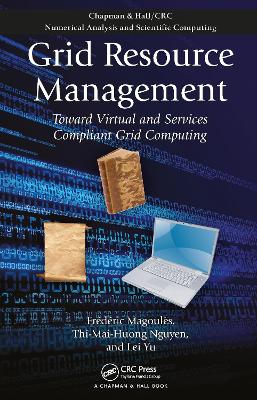Chapman & Hall/CRC Numerical Analysis and Scientific Computing
3 total works
Grid Resource Management
by Frederic Magoules, Thi-Mai-Huong Nguyen, and Lei Yu
Grid technology offers the potential for providing secure access to remote services, thereby promoting scientific collaborations in an unprecedented scale. Grid Resource Management: Toward Virtual and Services Compliant Grid Computing presents a comprehensive account of the architectural issues of grid technology, such as security, data management, logging, and aggregation of services, as well as related technologies.
After covering grid usages, grid systems, and the evolution of grid computing, the book discusses operational issues associated with web services and service-oriented architecture. It also explores technical and business topics relevant to data management, the development and characteristics of P2P systems, and a grid-enabled virtual file system (GRAVY) that integrates underlying heterogeneous file systems into a unified location-transparent file system of the grid. The book covers scheduling algorithms, strategies, problems, and architectures as well as workflow management systems and semantic technologies. In addition, the authors describe how to deploy scientific applications into a grid environment. They also explain grid engineering and grid service programming.
Examining both data and execution management in grid computing, this book chronicles the current trend of grid developments toward a more service-oriented approach that exposes grid protocols using web services standards.
Asynchronous Parallel Algo for Petaflop and Exaflop Comp
by Frederic Magoules and Cedric Venet
Developing applications that scale well on massively parallel architectures is quite difficult, due to problems with synchronization and communication time as well as fault tolerance. This book reviews current algorithms and presents new mathematical versions that avoid such problems. It details the implementation and validates the proposed versions on real examples. The methods are built on top of asynchronous algorithms, which do not need synchronization and thus have low sensitivity to communication delay. Moreover, they have huge potential as fault tolerant algorithms.
Introduction to Grid Computing
by Frederic Magoules, Jie Pan, Kiat-An Tan, and Abhinit Kumar
A Thorough Overview of the Next Generation in Computing
Poised to follow in the footsteps of the Internet, grid computing is on the verge of becoming more robust and accessible to the public in the near future. Focusing on this novel, yet already powerful, technology, Introduction to Grid Computing explores state-of-the-art grid projects, core grid technologies, and applications of the grid.
After comparing the grid with other distributed systems, the book covers two important aspects of a grid system: scheduling of jobs and resource discovery and monitoring in grid. It then discusses existing and emerging security technologies, such as WS-Security and OGSA security, as well as the functions of grid middleware at a conceptual level. The authors also describe famous grid projects, demonstrate the pricing of European options through the use of the Monte Carlo method on grids, and highlight different parallelization possibilities on the grid.
Taking a tutorial approach, this concise book provides a complete introduction to the components of the grid architecture and applications of grid computing. It expertly shows how grid computing can be used in various areas, from computational mechanics to risk management in financial institutions.

